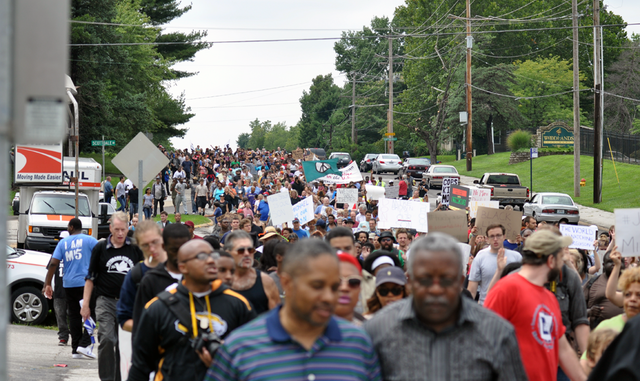
According to the U.S. Bureau of Labor Statistics, the Black unemployment rate fell to 5.9 percent in November, tying a record low hit in May 2018. What do these numbers mean? First, there is unemployment because this society doesn’t provide enough jobs. Secondly, these statistics don’t count the millions of people who have given up looking for a job, or the over two million people that are incarcerated. Third, the rate for Black people is almost double that for white people.
These are the realities of this society. The impact of racism starts before birth. In the San Francisco Bay Area, between 2012 and 2014, Black women were almost twice as likely to give birth to preterm babies as other women. They were nearly three times as likely to give birth to low birth weight babies – infants born weighing less than 5.5 pounds – than white women. Preterm babies have higher rates of death and disabilities. The impact of racism begins in the womb!
The inequalities continue in childhood. Schools today are as segregated as they were in the 1960s. Nationwide, districts with the most students of color receive 15% less per student in state and local funding than the wealthier white districts. In 2014, Black people with a college degree had an unemployment rate almost as high as white high school graduates.
The unemployment statistics don’t reflect the kinds of jobs people are working, the number of hours worked and certainly not the wages paid. An average Black family has only $1,700 in wealth—total assets minus debt. Thirty years ago, that same family had $6,800 in today’s dollars. In 2013, a single Black mother had an average of $0 in wealth compared to $3,000 for a single white mother. Nearly one in five Black families have zero or negative net worth, twice the rate of white families.
Black people are 18% of the U.S. population and are 40% of the prison population. One in three Black males will be incarcerated during their lives and receive 19% longer sentences when convicted of the same crime as white males. In 2017, police killed 1,147 people. One in four, 282, were Black.
Black people often live in places with some of the worst environmental pollution. Black children are six times more likely to die from asthma than white children. Developers are trying to build a coal shipping facility in West Oakland, which would further poison the air people breathe there.
Black History Month is a celebration of the struggles and gains of the past. From the fights against slavery to the fights against police killings, the story of Black people in the U.S. is one of resilience and resistance. The victories of past struggles have benefited and inspired working people of all colors. But despite how hard fought these struggles have been, it is clear that they are unfinished and we have a long way to go.
We confront a system that created and maintains deep racial divisions among working people. We are pitted against each other in an economy that offers fewer and fewer jobs. The racism of this society has long been a way for the wealthy few to maintain their control and benefit from the problems their system has created for us. As a result, their system has pushed increasing numbers of people into desperate poverty and into prisons and jails. This has created a true state of emergency for tens of millions of Black people.
As we have seen in the past, we can expect that people will respond. People rose up and refused to accept the police murder of Mike Brown in Ferguson, Missouri, Freddie Gray in Baltimore, Eric Garner in New York, and many others. Across the country people have proclaimed that “Black Lives Matter”. This is the proud heritage of Black people in this country. Black people have played a leadership role in many of the most important battles for human rights.
If we are going to change our conditions, we need to learn from the lessons of the past. Then our fights can lead to our taking control of and transforming this society so we all live as free human beings.
Featured image credit: source by “Loavesofbread”, licensed under CC-BY-SA 4.0

